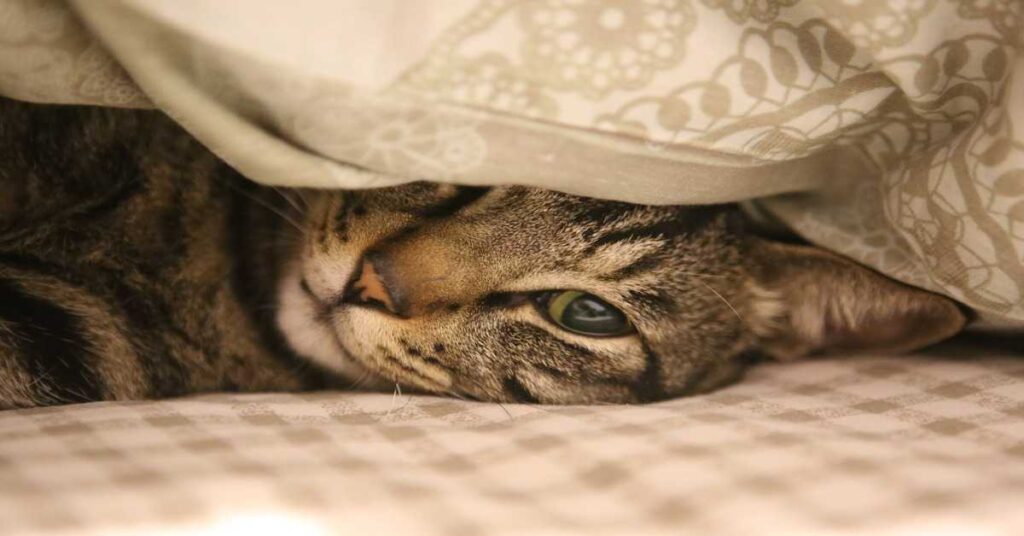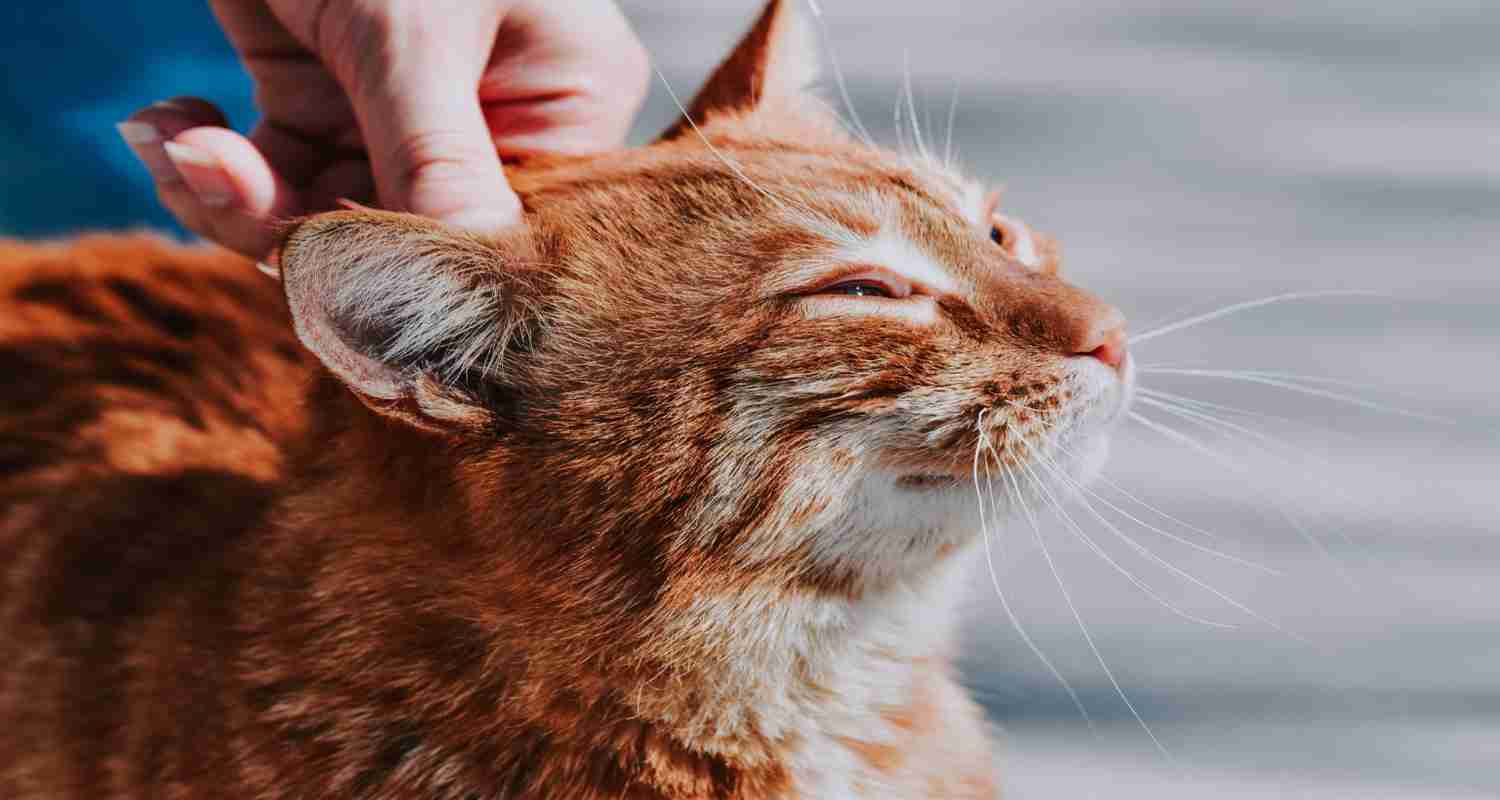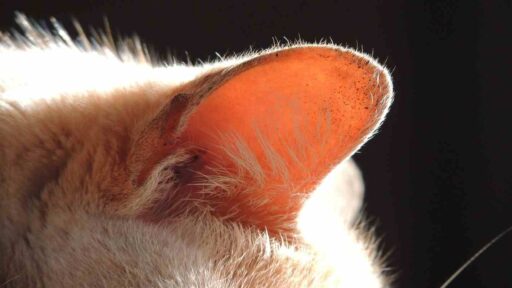Hot spots on cats, also known as acute moist dermatitis or pyotraumatic dermatitis, are a skin condition that can affect cats. These are localized skin inflammation and infection areas that can be intensely itchy and painful. Hot spots often appear as red, moist, and oozing lesions.
Causes
Various factors can cause hot spots on cats, or acute moist dermatitis, in cats. Here are some common reasons:
- Allergies: Cats can develop hot spots due to allergies to certain foods, environmental factors, or substances in their surroundings.
- Flea Bites: Flea infestations are a frequent cause of hot spots. Even a single flea bite can trigger an intense allergic reaction in some cats, leading to excessive scratching and licking.
- Skin Infections: Bacterial or fungal infections on the skin can contribute to the development of hot spots. These infections may arise from scratches, wounds, or other skin irritations.
- Poor Grooming: Cats that are unable to groom themselves adequately or have matted fur may be prone to developing hot spots, as moisture can get trapped close to the skin.
- Underlying Health Issues: Certain health conditions, such as anal gland problems, can cause discomfort, leading to excessive licking and chewing, which may result in hot spots.
- Stress or Anxiety: Cats may groom excessively when stressed or anxious, potentially leading to hot spots. Changes in the household, new pets, or unfamiliar environments can contribute to stress.
- Foreign Objects or Irritants: Splinters, burrs, or other foreign objects in a cat’s fur can cause irritation, prompting the cat to lick and chew the area, resulting in hot spots.
It’s important to note that accurate diagnosis by a veterinarian is crucial for effective treatment. If your cat is exhibiting signs of hot spots, seeking professional veterinary advice is recommended
The symptoms

The symptoms of hot spots on cats, also known as acute moist dermatitis, typically include:
- Red and Moist Skin Lesions: Hot spots often appear as inflamed, red, and moist areas on the cat’s skin. These lesions can be warm to the touch.
- Itching and Scratching: Affected cats may exhibit intense itching, leading to excessive scratching or biting at the affected area. This can exacerbate the inflammation and make the condition worse.
- Pain and Discomfort: Cats with hot spots may show signs of pain or discomfort. They may be sensitive to touch and maybe groomed excessively in an attempt to alleviate itching.
- Oozing and Pus: The hot spots may produce a discharge of pus or clear fluid. The affected area may be wet, and the fur around the lesion may appear matted.
- Hair Loss: Due to constant licking and biting, the fur in and around the hot spot may be lost, leaving a bald patch on the cat’s skin.
- Swelling: In some cases, the skin around the hot spot may become swollen, contributing to the overall discomfort experienced by the cat.
- Foul Odor: If there is a secondary bacterial infection, the hot spot may emit a foul odor.
It’s important to note that these symptoms can vary in severity, and not all cats will display all of these signs.
Hot spots on cats -Treatments
The treatment of hot spots on cats involves addressing the underlying cause, providing relief for symptoms, and preventing further self-trauma. Here are common treatments for hot spots:
- Veterinary Examination:
- Schedule a visit to the veterinarian for a thorough examination and accurate diagnosis of the underlying cause of the hot spots.
- Cleaning and Drying:
- Gently clean the affected area with a mild antiseptic solution, such as chlorhexidine, to remove debris and prevent infection.
- Keep the area dry to promote healing.
- Topical Medications:
- Your veterinarian may prescribe topical medications, such as antibiotics or antiseptic creams, to apply to the hot spots.
- Steroid creams may be used to reduce inflammation and itching.
- Oral Medications:
- Oral antibiotics or antifungal medications may be prescribed for bacterial or fungal infections.
- Anti-inflammatory medications, such as steroids, can help reduce inflammation and itching.
- Elizabethan Collar (E-collar):
- Use an Elizabethan collar to prevent the cat from licking or biting the affected area, allowing it to heal without further trauma.
- Identifying and Treating Underlying Causes:
- If the hot spots are due to allergies, your veterinarian may recommend an elimination diet or allergy testing to identify and address the specific allergen.
- Flea control measures are crucial if fleas are the cause. Use flea preventatives recommended by your vet.
- Pain Management:
- Pain relief medications may be prescribed to alleviate discomfort, making the cat less inclined to groom excessively.
- Behavior Modification:
- Address stress or anxiety factors that may contribute to excessive grooming. Environmental enrichment and calming measures may be beneficial.
- Preventive Measures:
- Implement preventive measures to avoid future hot spots. Regular grooming, maintaining a clean environment, and using flea preventatives can be crucial.
Always follow your veterinarian’s advice and prescribed treatment plan.
Hot spots on cats – Prevention
Preventing hot spots on cats involves addressing potential triggers and maintaining good overall health
- Flea Control:
- Use veterinarian-recommended flea prevention methods to prevent flea infestations, a common cause of hot spots.
- Regular Grooming:
- Brush your cat regularly to remove loose fur and prevent matting, which can contribute to skin irritations.
- Maintain a Clean Environment:
- Keep your cat’s living environment clean and free from potential irritants. Regularly clean bedding and ensure a hygienic litter box.
- Allergen Management:
- Identify and manage potential allergens. This may involve hypoallergenic diets, avoiding certain plants or materials, and addressing environmental factors.
- Dietary Considerations:
- Ensure your cat is on a well-balanced, high-quality diet that meets its nutritional needs. Discuss any dietary concerns with your veterinarian.
- Regular Veterinary Check-ups:
- Schedule regular veterinary check-ups to monitor your cat’s overall health and catch potential issues early.
- Stress Reduction:
- Minimize stressors in your cat’s environment. Provide a comfortable, safe space and consider environmental enrichment, such as toys and scratching posts.
- Prompt Wound Care:
- Attend to any wounds or injuries promptly. Clean and treat them to prevent infection and reduce the likelihood of hot spots.
- Supervise Outdoor Activities:
- If your cat goes outdoors, supervise its activities to minimize exposure to potential hazards, including injuries and irritants.
- Regular Parasite Checks:
- Check your cat regularly for external parasites such as ticks. If found, remove them carefully and consult your veterinarian for appropriate preventive measures.
- Address Behavioral Issues:
- If excessive grooming is related to stress or behavioral issues, consider addressing these factors through behavior modification techniques, such as environmental enrichment, or, if necessary, consult with a professional behaviorist.
By implementing these preventive measures, you can significantly reduce the risk of hot spots in your cat and contribute to its overall well-being.
Read more about health issues
Hot spots on cats FaQs:
How long does it take for a hot spot to heal on a cat?
A cat’s hot spot can take a few days to weeks to heal. It depends on how bad it is and how well it’s treated. With vet care and proper treatment, mild hot spots may get better in a few days. Severe ones might take longer. Follow the vet’s advice, use prescribed meds, and prevent further licking. If you’re worried, ask your vet for help.
How do you clean a cat hotspot?
To clean a cat’s hotspot:
- Gently Wash: Use a mild antiseptic solution, like chlorhexidine, to clean the hotspot. Dab, don’t rub, to avoid irritation.
- Remove Debris: Carefully remove any debris or loose fur around the hotspot to promote cleanliness.
- Pat Dry: After cleaning, pat the area dry with a clean, soft cloth. Avoid rubbing, as it may aggravate the sensitive skin.
- Avoid Harsh Products: Don’t use harsh soaps or alcohol, as they can be irritating. Stick to vet-recommended products.
- Repeat as Advised: Follow your veterinarian’s advice on how often to clean the hotspot. Regular cleaning promotes healing.
What is a natural remedy for hotspots on cats?
Natural remedies for hotspots on cats include:
- Aloe Vera Gel:
- Apply a small amount of pure aloe vera gel to soothe and promote healing. Ensure it is free from additives like alcohol.
- Chamomile Tea Compress:
- Brew chamomile tea, let it cool, and apply a gentle compress to the hotspot. Chamomile has anti-inflammatory properties.
- Apple Cider Vinegar (ACV) Rinse:
- Dilute ACV with water (1:1) and use a cotton ball to apply to the hotspot. It may help with itching and act as an antibacterial.
- Calendula Cream:
- Calendula has natural healing properties. Apply a calendula cream or ointment to the affected area.
- Coconut Oil:
- Gently massage a small amount of coconut oil onto the hotspot to moisturize and soothe irritated skin.
- Oatmeal Bath:
- Make an oatmeal paste with water and apply it to the hotspot. Oatmeal has anti-inflammatory properties.
- Witch Hazel:
- Dab witch hazel on the hotspot using a cotton ball. It has astringent and soothing properties.
- Tea Tree Oil (Diluted):
- Use diluted tea tree oil (in a carrier oil like coconut oil) sparingly, as it has antimicrobial properties. Consult with a vet before use.
Always consult with your veterinarian before trying any natural remedies to ensure they are safe and suitable for your cat’s specific condition
What does a hotspot look like on a cat?
A hotspot on a cat typically looks like a red, moist, and inflamed area on the skin. It may appear as a warm, painful lesion with possible oozing of clear fluid or pus. The affected area can be itchy, leading the cat to excessively lick, chew, or scratch, resulting in hair loss around the hotspot. In some cases, the skin may be swollen, and the fur around the lesion might appear matted. Hotspots can vary in size and may be easily noticeable due to the discomfort they cause, prompting changes in the cat’s grooming behavior




